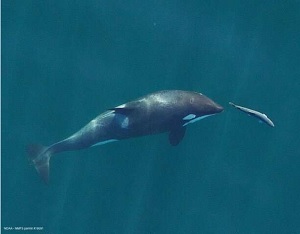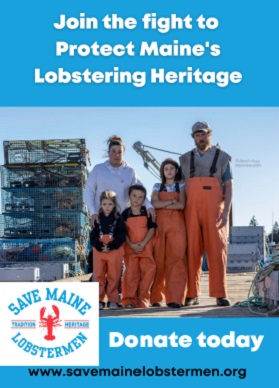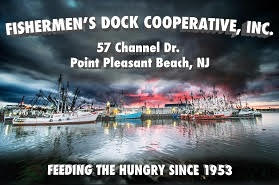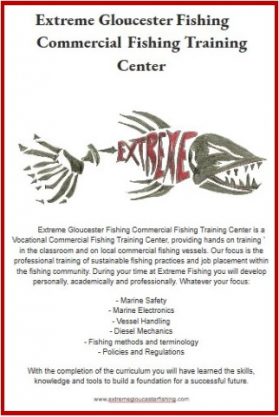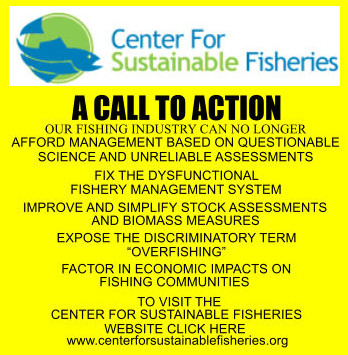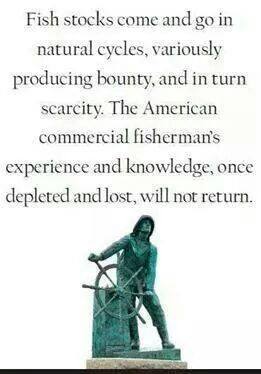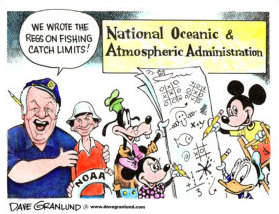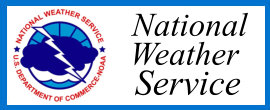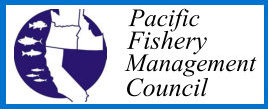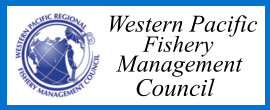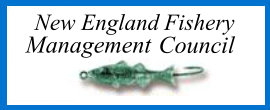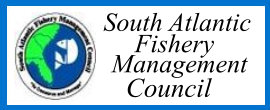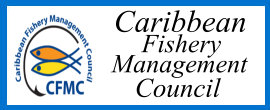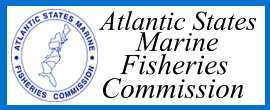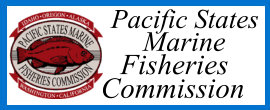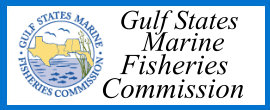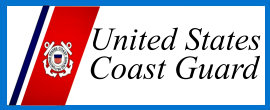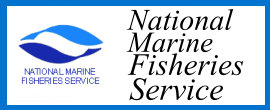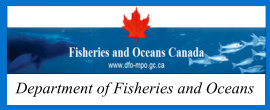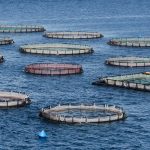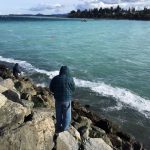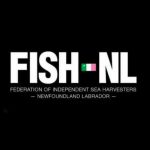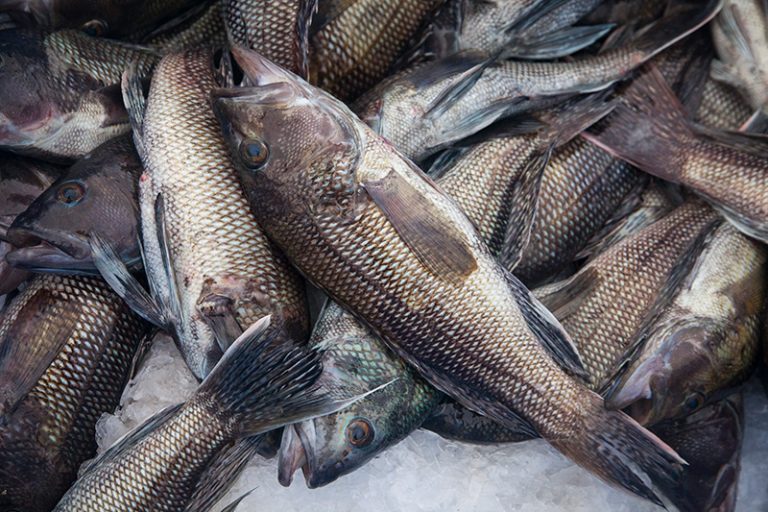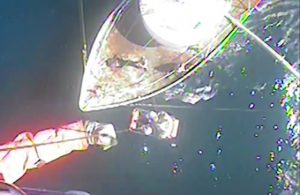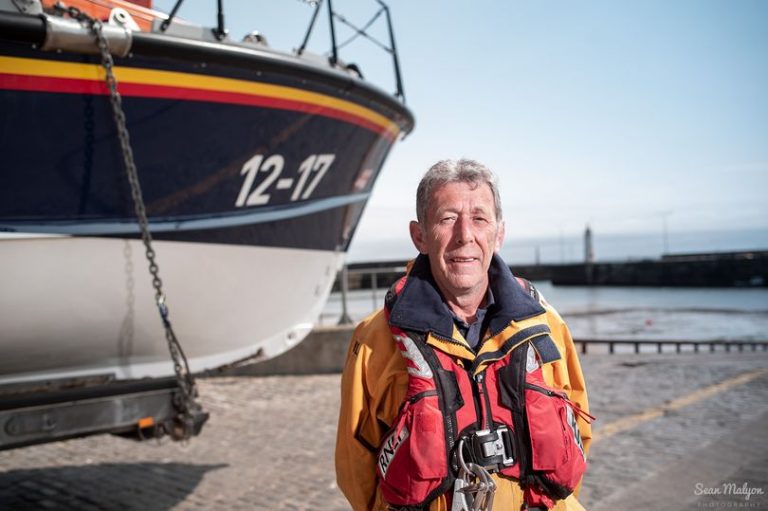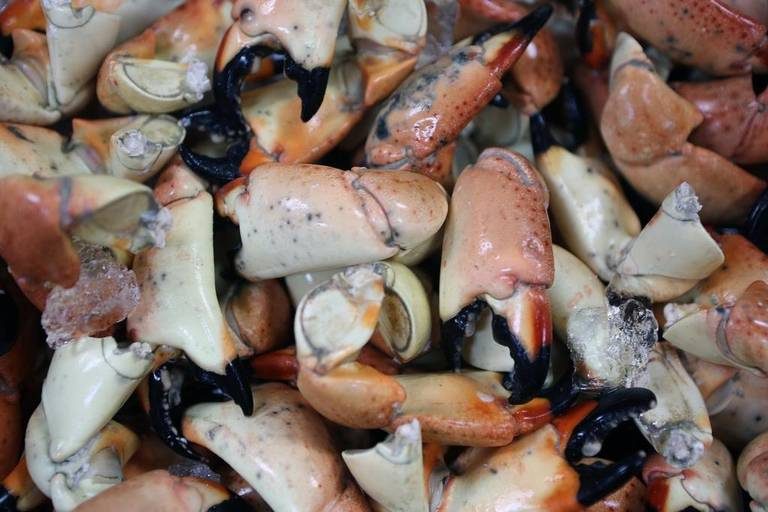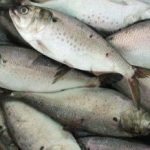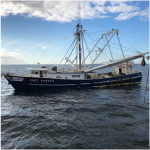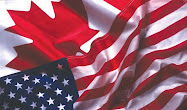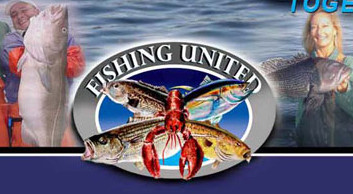Tag Archives: Gulf of Alaska
Federal judge dismisses Alaska trawlers’ lawsuit that sought to overturn halibut limits
 A federal judge has dismissed a lawsuit that sought to overturn new halibut bycatch limits on deep-sea trawlers that fish in federal waters off Alaska. The lawsuit was filed by Groundfish Forum Inc., a Seattle-based trawl trade group, after the North Pacific Fishery Management Council passed a rule that reduces halibut bycatch limits for many trawlers when there are fewer halibut in Alaska waters. The National Marine Fisheries Service, in charge of implementing the rule, moved to dismiss the lawsuit, and U.S. District Court Judge Sharon Gleason ruled in favor of the agency on Nov. 8. Intrafish, a trade publication, first reported on the ruling. The lawsuit has been a major issue in fishing communities across the Gulf of Alaska. Some of those communities joined the federal government in defense, as did various fishing and conservation organizations. more, >>CLICK TO READ<< 10:22
A federal judge has dismissed a lawsuit that sought to overturn new halibut bycatch limits on deep-sea trawlers that fish in federal waters off Alaska. The lawsuit was filed by Groundfish Forum Inc., a Seattle-based trawl trade group, after the North Pacific Fishery Management Council passed a rule that reduces halibut bycatch limits for many trawlers when there are fewer halibut in Alaska waters. The National Marine Fisheries Service, in charge of implementing the rule, moved to dismiss the lawsuit, and U.S. District Court Judge Sharon Gleason ruled in favor of the agency on Nov. 8. Intrafish, a trade publication, first reported on the ruling. The lawsuit has been a major issue in fishing communities across the Gulf of Alaska. Some of those communities joined the federal government in defense, as did various fishing and conservation organizations. more, >>CLICK TO READ<< 10:22
Pollock trawl closure sends economic ripples across Kodiak as fishermen adapt
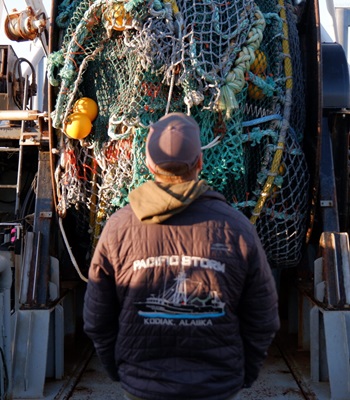 Cole Hockema has been fishing since he was a teenager growing up in Oregon. Hockema captains the F/V Pacific Storm, a 100-foot trawler based out of Kodiak, which his father owns. The vast majority of the Central Gulf of Alaska trawl fleet is made up of local boats like his. According to the trade group Alaska Groundfish Data Bank, 19 boats were fishing in the Central Gulf of Alaska when the pollock fishery closed on Sept. 25. 15 of those are homeported in Kodiak. Normally, fishermen like Hockema would be out on the water until early November, when the Gulf of Alaska’s pollock B season typically closes. But this fall season ended just three weeks into fishing, when two vessels incidentally hauled in approximately 2,000 Chinook salmon, which exceeded the fishery’s annual bycatch limit. Hockema said the Pacific Storm was offloading its catch on Sunday, Sept. 22 when they first got the news about the bycatch and he knew the fleet would need to stop fishing immediately. more, >>CLICK TO READ<< 16:27
Cole Hockema has been fishing since he was a teenager growing up in Oregon. Hockema captains the F/V Pacific Storm, a 100-foot trawler based out of Kodiak, which his father owns. The vast majority of the Central Gulf of Alaska trawl fleet is made up of local boats like his. According to the trade group Alaska Groundfish Data Bank, 19 boats were fishing in the Central Gulf of Alaska when the pollock fishery closed on Sept. 25. 15 of those are homeported in Kodiak. Normally, fishermen like Hockema would be out on the water until early November, when the Gulf of Alaska’s pollock B season typically closes. But this fall season ended just three weeks into fishing, when two vessels incidentally hauled in approximately 2,000 Chinook salmon, which exceeded the fishery’s annual bycatch limit. Hockema said the Pacific Storm was offloading its catch on Sunday, Sept. 22 when they first got the news about the bycatch and he knew the fleet would need to stop fishing immediately. more, >>CLICK TO READ<< 16:27
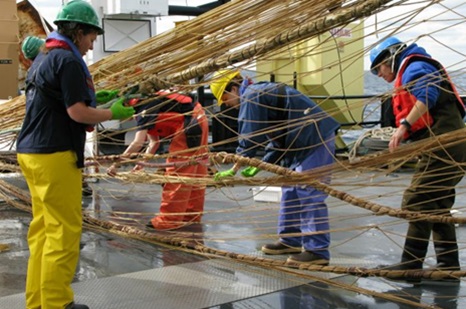
Multiple groups urge seafloor protections from pelagic trawling
A diverse group of harvesters, conservation entities and others are calling on federal fisheries managers to do more to protect seafloor habitats from midwater trawl nets they say are dragging the bottom of the ocean floor. Midwater, or pelagic trawling — used to catch schooling fish like pollock, is supposed to be fished in the water column rather than on the seafloor. For this reason, pelagic trawling is allowed in most conservation areas closed to bottom trawling — a form of fishing where nets are purposely dragged on the seafloor and damage corals, sponges and other living seafloor habitats in the process. An analysis by the National Marine Fisheries Service indicates that 40% to 100% of the width of pelagic trawl gear fished in the Gulf of Alaska and Bering Sea has been in contact with the seafloor, and that these nets, which range from 50 to 190 yards wide, are dragged for miles. more, >>CLICK TO READ<< 20:12
Pollock fishery shut down early after unprecedented salmon bycatch in Gulf of Alaska
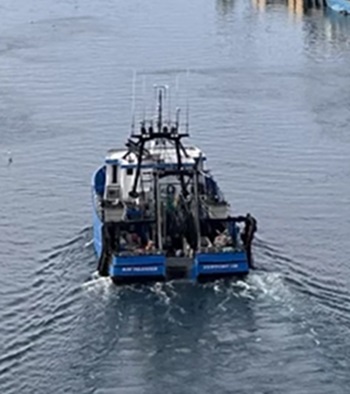 The National Marine Fisheries Service [NMFS] announced Wednesday, Sept. 25 that it was shutting down the rest of the Central Gulf of Alaska pollock season. That’s after reports that the trawler fleet incidentally caught “unprecedented amounts of Chinook salmon” this week, which comes as the issue of salmon bycatch faces mounting scrutiny. Jonathan Kurland, the Fisheries Services acting regional administrator for the Alaska region. said the closure was necessary to “prevent exceeding the 2024 Chinook salmon prohibited species catch limit.” The Kodiak-based trade group Alaska Groundfish Data Bank said in a press release on Sept. 24 that two fishing vessels trawling for pollock on Sept. 22 came upon a hotspot of Chinook salmon, which the organization described as an “extremely unprecedented amount.” The vessels were in an area adjacent to Kodiak Island. more, >>CLICK TO READ<< 15:01
The National Marine Fisheries Service [NMFS] announced Wednesday, Sept. 25 that it was shutting down the rest of the Central Gulf of Alaska pollock season. That’s after reports that the trawler fleet incidentally caught “unprecedented amounts of Chinook salmon” this week, which comes as the issue of salmon bycatch faces mounting scrutiny. Jonathan Kurland, the Fisheries Services acting regional administrator for the Alaska region. said the closure was necessary to “prevent exceeding the 2024 Chinook salmon prohibited species catch limit.” The Kodiak-based trade group Alaska Groundfish Data Bank said in a press release on Sept. 24 that two fishing vessels trawling for pollock on Sept. 22 came upon a hotspot of Chinook salmon, which the organization described as an “extremely unprecedented amount.” The vessels were in an area adjacent to Kodiak Island. more, >>CLICK TO READ<< 15:01
Gulf of Alaska trawl pollock vessels to be included in electronic monitoring program
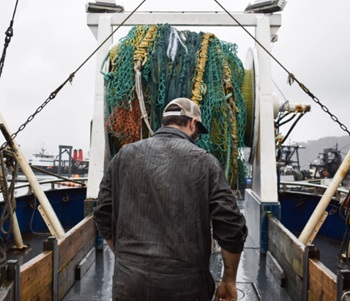 According to the 2023 annual report from the North Pacific Observer Program, the vast majority of groundfish harvest in Alaska is observed with full coverage, meaning 100% of all trips are monitored by either onboard observers or electronic monitoring. After years of testing the program, electronic monitoring will soon be expanded to include pelagic trawl pollock catcher vessels and tenders delivering to shoreside processors or stationary floating processors, across the Bering Sea and Aleutian Islands, and the Gulf of Alaska. That includes vessels that already have an observer on board. more, >>CLICK TO READ<< 07:55
According to the 2023 annual report from the North Pacific Observer Program, the vast majority of groundfish harvest in Alaska is observed with full coverage, meaning 100% of all trips are monitored by either onboard observers or electronic monitoring. After years of testing the program, electronic monitoring will soon be expanded to include pelagic trawl pollock catcher vessels and tenders delivering to shoreside processors or stationary floating processors, across the Bering Sea and Aleutian Islands, and the Gulf of Alaska. That includes vessels that already have an observer on board. more, >>CLICK TO READ<< 07:55
Commercial Fisherman Gainhart (Bud) Samuelson Junior, 77, of Petersburg has passed away
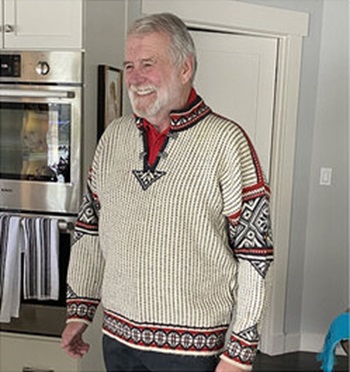 Bud was born on February 13, 1947, to Gainhart Samuelson, Senior, and Mildred (Massey) Samuelson. A lifelong resident of Petersburg, he grew up living with his mother and siblings on Hammer Slough. Summers were spent with his father at Portage Bay, where he loved fishing and hunting and grew determined to one day run a commercial fishing vessel of his own and to be a good provider for his family. After graduating from Petersburg High School in 1965, Bud landed a job on Andy Wikan’s boat, crabbing, longlining and seining aboard the wooden fishing vessel Pacific Sea. Before long, his dream future began to clarify around the captain’s lovely daughter, Audrey Wikan. Determined to impress, Bud’s fishing career accelerated until he was crabbing, seining, tendering and longlining throughout Southeast Alaska, the Gulf of Alaska, and the Bering Sea. more, >>CLICK TO READ<< 20:23
Bud was born on February 13, 1947, to Gainhart Samuelson, Senior, and Mildred (Massey) Samuelson. A lifelong resident of Petersburg, he grew up living with his mother and siblings on Hammer Slough. Summers were spent with his father at Portage Bay, where he loved fishing and hunting and grew determined to one day run a commercial fishing vessel of his own and to be a good provider for his family. After graduating from Petersburg High School in 1965, Bud landed a job on Andy Wikan’s boat, crabbing, longlining and seining aboard the wooden fishing vessel Pacific Sea. Before long, his dream future began to clarify around the captain’s lovely daughter, Audrey Wikan. Determined to impress, Bud’s fishing career accelerated until he was crabbing, seining, tendering and longlining throughout Southeast Alaska, the Gulf of Alaska, and the Bering Sea. more, >>CLICK TO READ<< 20:23
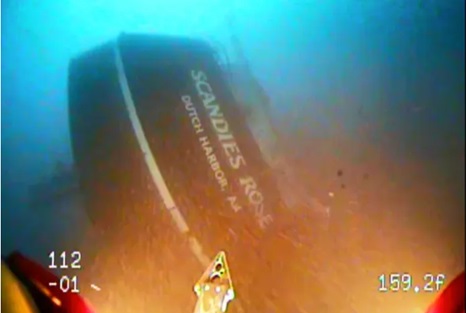
Read the final Coast Guard report on the 2019 sinking of F/V Scandies Rose in Gulf of Alaska
The U.S. Coast Guard Marine Board of Investigation has issued its final report on the sinking of the 130-foot crab vessel Scandies Rose on New Year’s Eve, 2019, a tragedy that took the lives of five men on board, including the captain. Two crew members, Dean Gribble Jr., of Edmonds, Wash., and Jon Lawler, of Anchorage, survived by reaching a life raft in the roiling the Gulf of Alaska; they were rescued by U.S. Coast Guard near Sutwick Island off the Alaska Peninsula. Captain Gary Cobban, Jr. and his son David, Seth Rousseau-Gano, Arthur Ganacias, and Brock Rainey died. Lawler died in a motorcycle accident on Oct. 31, 2021, leaving Gribble as the sole survivor of the disaster. The Marine Board of Investigations found a major factor in the sinking was the captain’s judgment. An earlier report by the National Transportation Safety Board was more guarded in assigning blame. more, >>click to read<< 08:19
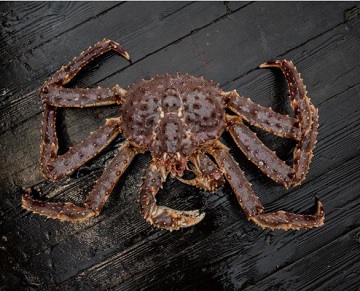
Western Alaska: Crab are looking healthy after downturn in 2019
The region is known for its abundant crab populations and supports several species. Ten species of crab are caught throughout fisheries in the state, seven of them having commercial importance. According to the Alaska Fish and Game (ADF&G) website, the Bering Sea, Aleutian Islands, and the Gulf of Alaska combined produce approximately 1/3 or more of total crab catches in the United States. The season for commercial crabbing is dependent on when they open, and how fast the guideline harvest limit (GHL) is caught. The harvest data from this season and the trawl survey are put into the model. >click to read< 12:57

Solutions to the Bycatch Blame Game
The issue of bycatch has grown more important as some fisheries get smaller and those who depend on the fish for their livelihood or survival find that there are not enough fish to go around. This raises the question of whether bycatch is at the root of the problem or if other issues facing fisheries must be addressed. Bycatch is monitored in a combination of ways, through at-sea observers, electronic monitoring, seafood processing plant observers, logbooks, and fish tickets. “In the Bering Sea, approximately 94 percent of all catch is observed, including 99 percent of all trawl catch,” Bush explains. “In the Gulf of Alaska, 40 to 50 percent of all catch is observed across all gear types.” Photos, >click to read< 12:26

Commission cuts halibut limits across Alaska, Canada
The International Pacific Halibut Commission adopted its annual catch limits for halibut in 2023 from California to the Bering Sea at its meeting Jan. 27. Coastwide, the total constant exploitation yield, a term for how many total halibut longer than 26 inches are removed from the population, regardless of reason, is just shy of 37 million pounds, a 10% drop from 41.2 million pounds last year. Every regulatory area received a cut except for 2A, which covers California, Oregon and Washington. Area 3A, which covers the central Gulf of Alaska, and area 4A, which covers the eastern Aleutians, saw the largest cuts at 17% each. Southeast Alaska only saw a 1% cut, while the western Gulf, western Aleutians and central Bering Sea each saw 6% cuts. The Canadian coast saw a 10.3% cut. >click to read< 11:50

Battlefront: Salmon bycatch, electronic monitoring on the table at Sitka meeting of NPFMC
The bycatch of chinook and chum salmon is on the agenda, as the spring meeting of the North Pacific Management Council gets underway in Sitka this week (June 9-14). In addition to hearing how much salmon is being intercepted in the Gulf of Alaska and Bering Sea by the trawl fisheries, the council will review a proposal to supplement the human observer program with electronic monitoring. >click to read< Note: Find links to the Council’s agenda and meeting livestream here.

Depredation: Whales and the Violent Fight for Fish on the Line
In the Gulf of Alaska, as well as in longline fisheries throughout the world from the Bering Sea to the Antarctic and tropical waters between, toothed whales, that is, any whale that feeds with teeth instead of baleen, such as sperm, pilot, and killer whales are learning to see fishers and their gear as a source of an easy meal. Scientists researching this behavior, known as depredation, say whales are increasingly eating lucrative catches right off the hook instead of foraging naturally. There’s no easy way to stop it, and the behavior is spreading through whale culture. Whales’ penchant for hooked fish might be the biggest fisheries story that hardly anyone knows about. >click to read< 10:01

Special interest hit piece unfairly targets Southeast fisheries
I was disappointed by what I consider to be a targeted attack on Southeast Alaska salmon fisheries. A report on interceptions of British Columbia salmon in Southeast Alaska salmon fisheries was publicly released on Tuesday by Canadian environmental groups. Many Pacific salmon stocks are highly migratory and often travel across state and international borders. Several stocks migrate into Alaska’s waters to take advantage of the rich marine environment in coastal Southeast Alaska and the Gulf of Alaska where they feed and grow before starting their journey back to their natal streams to spawn. Our quality habitat allows these salmon to thrive and return healthy to their natal streams to renew their life cycle. >click to read< by Doug Vincent-Lang 13:41
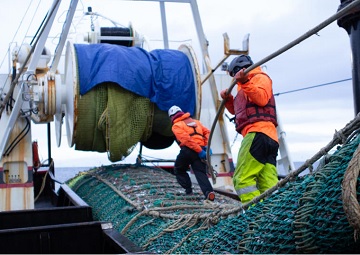
Dunleavy administration announces formation of bycatch task force
“We’ve had a reduction in or closure of the crab fisheries in the Bering Sea. The [North Pacific Fishery Management] Council is discussing how to deal with halibut bycatch, and I think there’s a lot of perception that there are bycatch issues associated with what’s happened with salmon in Western Alaska systems,” said Alaska Fish & Game Commissioner Doug Vincent-Lang. And, he says, his boss has taken notice. “I think the governor was hearing loud and clear that there was just a lot of noise around the issue of bycatch,” >click to read< 12:52
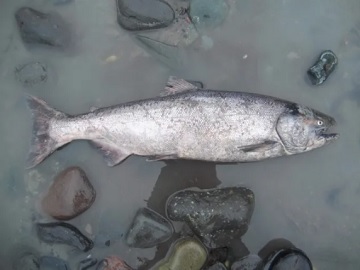
Dividing the baby
Alaska’s Kenai River is today a textbook example of the problems of managing mixed-stock fisheries right down to commercial set gillnetters protesting they catch comparatively few of the weak stock. The weak stock is in this case Chinook, or what Alaskans usually just call king salmon, and it just happens to be the same fish that gets caught as trawl bycatch in the Gulf of Alaska and the Bering Sea. To date this year, according to National Marine Fisheries Service data, trawlers in the Bering Sea have caught about 11,000 Chinook on their way to a harvest of nearly 1 million metric tons, or about 2.2 billion pounds of pollock. >click to read< 09:04
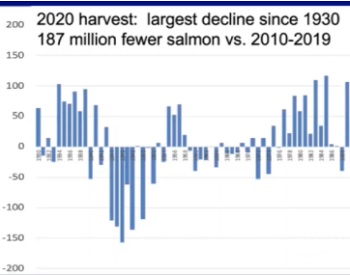
The big bust
The 2020 decline in North Pacific salmon numbers appears to have been the greatest in recorded history, according to a trio of scientists who’ve spent much of their careers studying the secret lives of salmon in the ocean. They suggested to the North Pacific Anadromous Fish Commission (NPAFC), an international monitoring group, that the crash was likely driven by warmer ocean waters and an explosion of pink salmon in 2018 and 2019.,, “Unexpectedly, the high abundance of Pacific salmon came to an abrupt end in 2020. Preliminary commercial catch statistics for all salmon species indicate Pacific salmon harvests, which provide an index of abundance, declined more in 2020 than in any other period on record since 1930. >click to read< 11:01
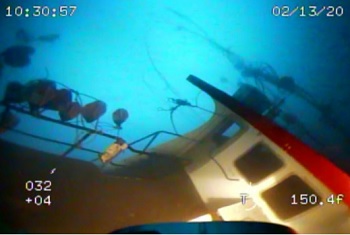
F/V Scandies Rose: Survivor Jon Lawler’s Wrenching Testimony, Experts note serious flaws in a USCG regulation
The architects who testified were not involved with the development of the stability booklet for the Scandies Rose, a Washington managed boat which went down around 10 p.m. in the Gulf of Alaska during a storm that generated National Weather Service warnings of heavy freezing spray. Also Wednesday, Jon Lawler, one of the two survivors of the seven-person crew, offered wrenching testimony of the final minutes before the boat went under. After donning a survival suit, he exited the wheelhouse amid what he described as sheer panic as the boat tilted crazily and tossed people about. >click to read< 17:38
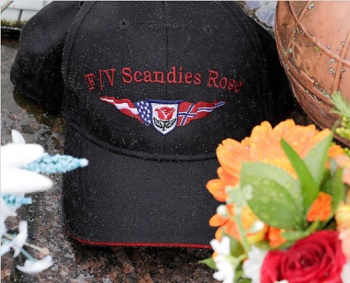
‘We are rolling over’ – The inquiry into the Bering Sea sinking of the F/V Scandies Rose crab boat opened with a mayday call
Through the buzz of airwave static, a voice can be heard giving coordinates in the Gulf of Alaska. Then four chilling words: “We are rolling over.” This nighttime Dec. 31, 2019, mayday transmission from the Scandies Rose, a Washington-managed crab boat, was played Monday morning as the Coast Guard launched two weeks of public hearings to investigate the sinking that took the lives of five of the seven crew. The Coast Guard Marine Board of Investigation is the highest level of inquiry into accidents, and the schedule includes testimony from the vessel’s co-owner, two survivors, former crew, naval architects and people involved in repairs. >click to read< 13:08
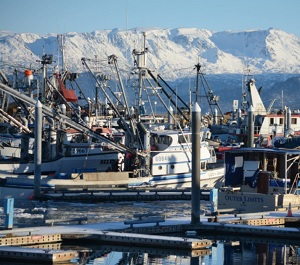
Gulf of Alaska Pollock fishermen agree to delay season, will allow roe to ripen, making fish more valuable.
Trawl fishermen targeting pollock in the Gulf of Alaska have collectively agreed to stand down from the Jan. 20 start of the fishery in order to target the fish in their more lucrative phase of harvesting the roe, instead of the flesh of the fish which is used more in fish sticks and surimi. The fishermen want to wait for two weeks to allow the roe to ripen, making the fish more valuable.,, In June 2019, the North Pacific Management Council voted to combine the four pollock seasons — two in spring and two in fall — to just two seasons: one that runs from Jan. 20 to May 31, and another that runs from Sept. 1 to Nov. 1. >click to read< 08:20
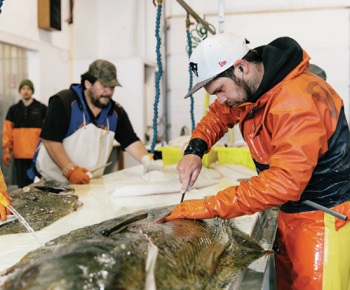
Some bright spots for high-value salmon, halibut in 2021
Following the trend of the last several years, the salmon forecast for the 2021 salmon season in Bristol Bay looks positive. The Alaska Department of Fish and Game is forecasting a total return of about 51 million sockeye salmon, with an inshore run of about 50 million. That’s about 6 percent better than the average for the last decade and 45 percent greater than the long-term average.,, Halibut outlook – Stock numbers in the Pacific halibut fishery are overall still declining, but there are individual bright spots in some regions. >click to read< 10:43

“Wind is the culprit,” – NOAA study shows wind influence in GOA Pollock abundance
As Bob Dylan famously said “you don’t need a weatherman to know which way the wind blows.” The study conclusively shows for the first time that year-to-year variation in the geographic distribution of juvenile Pollock in the Gulf is driven by wind direction, which may keep juvenile Pollock in favorable habitat, or push them into currents and on to less favorable conditions. “Wind is the culprit,” according to AFSC biologist Matt Wilson. “The consequence is that when a large proportion of the juvenile population is transported to the southwest many of those fish are likely lost from the Gulf of Alaska.” >click to read< 11:17
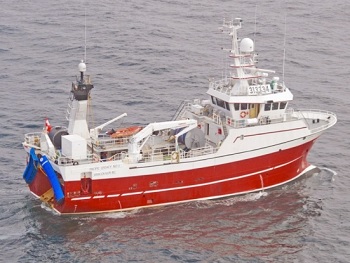
A research expedition returning to Victoria puzzled by a no-show of the fish after an initial big haul
“It is a little difficult for people to accept that scientifically, no catch is sometimes as important as large catches. I think this is the case here,” said Richard Beamish, who is organizing the $1.45-million expedition with fellow B.C. scientist Brian Riddell. “We had relatively large catches of pink, chum and coho early in the survey and there were no salmon in the same area a few weeks later.” It is clear that there are probably large schools of species such as coho that are moving over large areas in response to some factor, Beamish said. The chartered trawler Pacific Legacy No. 1 left Victoria on March 11, headed up to the southern part of the Gulf of Alaska and fished off Dixon Entrance. On Friday, it was 513 miles off Cape Beale, west of Ucluelet. The team expects to return to Victoria on Tuesday. >click to read< 10:32

U.S. Commerce allocates $35M for P-cod, Chignik fisheries disaster relief
Fishermen affected by the 2018 Pacific cod and Chignik sockeye disasters will soon have access to about $35 million in relief funding. Secretary of Commerce Wilbur Ross allocated about $65 million to fisheries disaster relief, about $35 million of which is for Alaska,, about $24.4 million will go to the Pacific cod fishery disaster and about $10.3 million to the Chignik sockeye fishery. The funding was appropriated when Congress passed the 2019 Consolidated and Supplemental Appropriations Act. >click to read< 15:02

F/V Scandies Rose: Coast Guard searching for crew members of crab vessel that sank in Gulf of Alaska
The Coast Guard has not officially identified any of the crewmembers. The crew placed a mayday call around 10 p.m. Tuesday, the Coast Guard said. McKenzie said she didn’t know what time the two crew members were found, or what their condition is. McKenzie said investigators don’t know what might have caused the ship to sink. Efforts right now are focused on finding the remaining five fishermen, then an investigation will launch into what caused the vessel to sink. She said families of most of the crew have been notified. >click to read< 20:46
Coast Guard searching for 5 Fishermen after crab boat sinks near Sutwik Island. 2 Fishermen were rescued – >click to read< 14:36
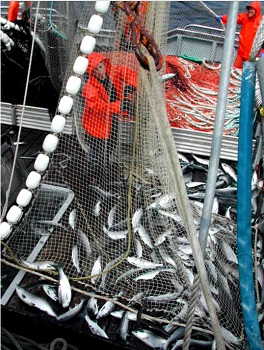
2020 Forecast: Bristol Bay still looks bright, but fishermen face cuts in cod, crab and halibut
Judging by the forecasts, 2020 could be an eventful year in Alaska’s commercial fisheries. Even though not all the forecasts and catch limits are rosy, there are some bright spots, such as an increased eastern Bering Sea snow crab total allowable catch and another promising forecast for Bristol Bay sockeye salmon. However, fishermen this winter are looking at tighter limits in some groundfish fisheries, particularly in the Gulf of Alaska. >click to read< 11:50
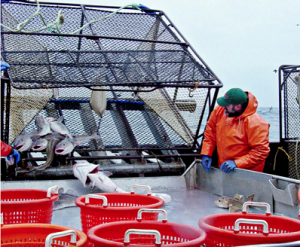
Extremely low cod numbers lead feds to close the Gulf of Alaska fishery for the first time
A stock assessment this fall put Gulf cod populations at a historic low, with “next to no” new eggs, according to National Oceanic and Atmospheric Administration research biologist Steve Barbeaux, who authored the report. At their current numbers, cod are below the federal threshold that protects them as a food source for endangered Steller sea lions. Once below that line, the total allowable catch goes to zero — in other words, the fishery shuts down. >click to read< 08:32

Uneven status of Pacific halibut revealed by annual data
Following the trend of the past several years, overall Pacific halibut biomass seems to be down again. The most recent stock assessment presented to the International Pacific Halibut Commission for its interim meeting on Nov. 25-26 shows a coastwide decline in spawning biomass, though that decline isn’t even across all areas. That’s a continuation of a trend seen in stock assessments since 2015. Particularly, surveys have indicated lower numbers of halibut in the central Gulf of Alaska. >click to read< 08:40
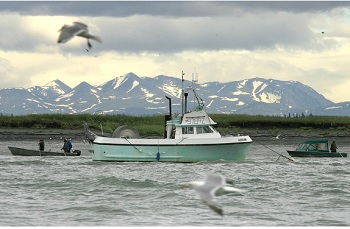
Opposite forecasts for SE pinks, Bristol Bay reds; Cook Inlet busts
Biologists are forecasting another weak pink salmon year for Southeast and another strong sockeye salmon run for Bristol Bay coming in the 2020 season. The forecasts for Southeast Alaska and for Bristol Bay, released in late November, continue the trends of the past few years in both areas. In Southeast, biologists are forecasting about 12 million fish to be harvested, with a range of 7 million to 19 million fish. >click to read< 11:51







